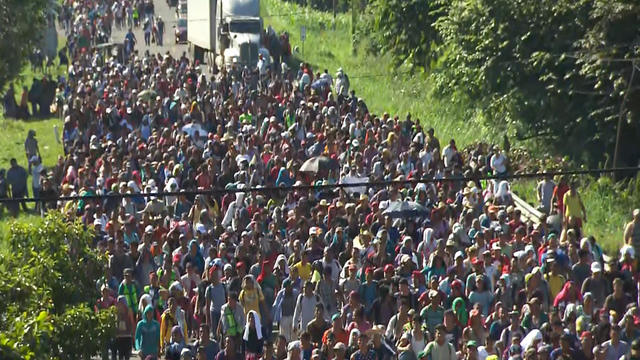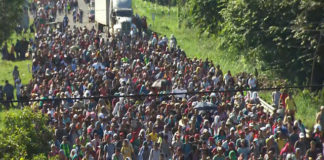
What’s a few million people when counting illegal immigrants?
[Author’s Note: The Supreme Court’s ruling that America has no legitimate or valid interest in determining—in fact even in politely asking—who is a citizen in the country and who is not seems to have stunned many Americans but in actual fact it is merely the logical next step in the long but steady march to erase any meaningful distinction between American citizens and foreign nationals in America and one more step closer to eliminating sovereignty as a concept and the construct of the nation-state it implies. This prescient column was first published by the Ventura County Star and Gannett Newspapers in 2010.]
By Mark Cromer
For the past 25 years, politicians and activists have played it fast and loose when it comes to estimating the size of the illegal immigrant population in the United States. Before the 1986 Simpson-Mazzoli Act, proponents of the amnesty insisted it would cover about 900,000 people in the country illegally.
By the time it was over, more than 3 million illegal immigrants had taken advantage of its provisions.
With President Obama and Congress vying this summer for politically safe footing in the treacherous terrain of immigration policy, one might assume that accurately assessing the true scope of the problem would be an urgent federal priority.
But it is not, nor is it likely to be anytime before the so-called comprehensive immigration reform that the president is pushing comes to a vote, as the one thing the Obama administration doesn’t want to do is spread panic.
In other words: keep the victim calm.
The 1986 amnesty triggered a land rush across the southern border that has resulted in a staggering population of illegal immigrants in the country today, though its massive size is acknowledged more in the way it is felt anecdotally across communities; through classrooms, emergency rooms and jail cells.
No one seems quite sure precisely how many millions of illegal immigrants are now here, least of all journalists covering the issue.
Earlier this month, the Los Angeles Times published a figure of 11 million illegal immigrants in one story, and then a few pages later in the same daily edition, used a figure of 12 million illegal immigrants in another story. That’s two news stories in the same newspaper on the same day identifying the same population—with a margin of error of a million or so people by the newspaper’s math alone.
Other newspapers and magazines of record have used figures as wildly divergent as 7 million to 15 million people when projecting the size of the illegal immigrant population.
Oh well, what’s a few million people—give or take—when counting illegal immigrants?
While think tanks ranging from the Pew Hispanic Center to the Center for Immigration Studies have estimated the number to be close to 11 million, Bear Stearns published a detailed study in 2005 that concluded the population of illegal immigrants could be as high as 20 million people.
The obvious-if-unspoken reality is that no one has any reliably accurate figure of precisely how many millions of people are illegally in the country. While that’s partly due to the clandestine nature of illegal immigration, much of this dearth of information is a result of government malfeasance and journalistic complicity.
Government at all levels has made it its responsibility to not count the numbers of illegal immigrants pouring into schools, hospitals, jails and the fraud-infested ledgers of its welfare rolls. With the threat of being accused of “racial profiling” hanging over its head like a Sword of Damocles, government agencies have been conditioned to simply look the other way.
And many journalists, whether by ideological concurrence or sheer professional laziness or some mixture of the two, now provide more cover than critical examination.
This can be seen in the reflexive use of the figure of 11 million illegal immigrants in stories around the country, a figure that has remained oddly static in much of the media over a period of years, as if there has been no discernable net growth in this population even as Mexico continues to dissolve into a morass of violent chaos and corruption.
Journalistic complicity can also be seen in the unchallenged declarations from the White House about its “unprecedented” efforts to secure the border, allowing Homeland Security Secretary Janet Napolitano to offer vague assurances that “the numbers are all going the right way” when discussing interdiction and deportations.
It’s a complicity that allows politicians to piously declare a humane solution must be found for the millions of illegal immigrants that have established deep ties with American communities, without being challenged by questions of what should happen to the millions of other illegal immigrants that have arrived here over the past few years, whom have no deep or truly enduring ties.
Should they not be identified and deported? It’s a yes or no question, but one that is simply not asked. And what of those illegal immigrants who have ignored deportation orders, disappearing again into America. Should they not be found and shown the door?
These questions aren’t raised because the answers from the White House and the Congressional leadership are likely to further scare and enrage an already frightened and infuriated electorate. The result is a credibility gap that makes the dynamic between LBJ and the American people during the Vietnam War look like a simple misunderstanding.
Even in the absence of reliable data and in the face of journalistic acquiescence, the American people can safely bet on two things regarding an immigration reform bill: the problem is far larger than Washington will ever admit before the vote; and that illegal immigrants here just 15 minutes—let alone 15 years—will indeed be granted amnesty.










